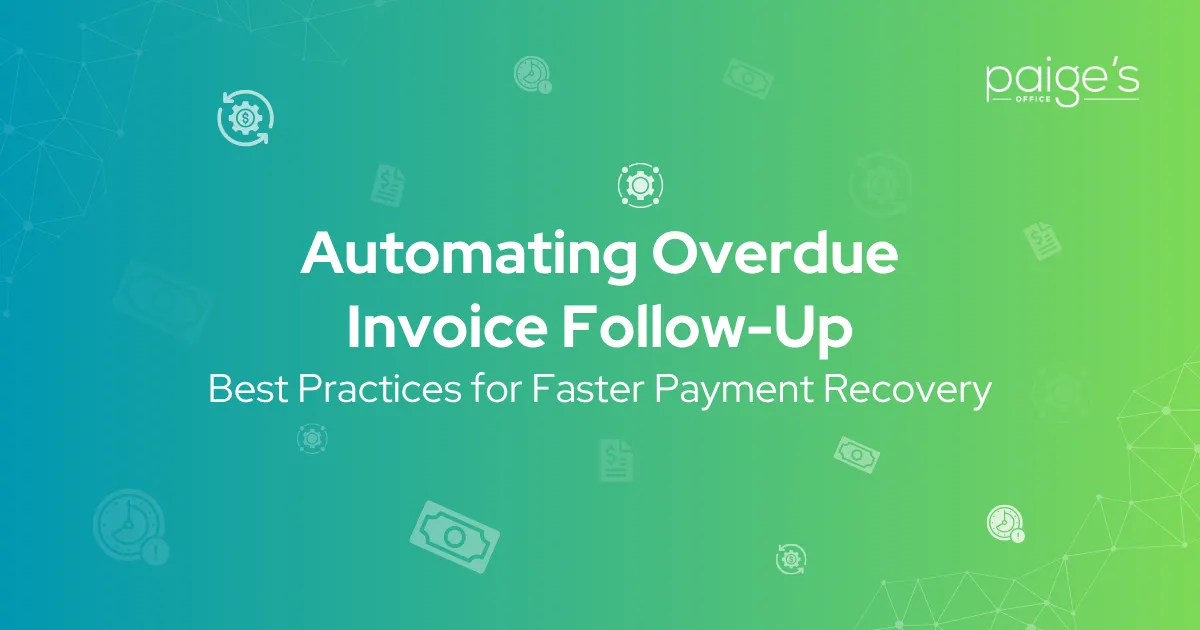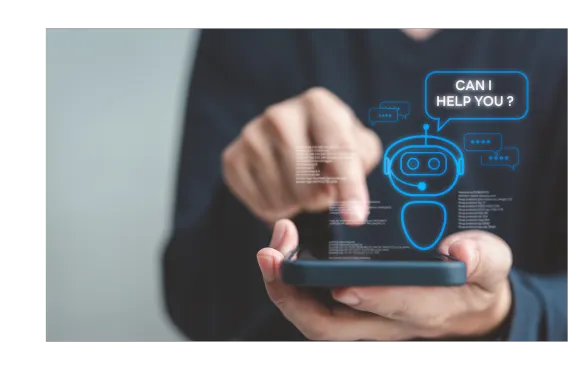
Automating Overdue Invoice Follow-Up: Best Practices for Faster Payment Recovery
Late payments can hit your cash flow like a brick. One moment, everything seems fine, and then suddenly, you’re scrambling to cover your expenses. For small business owners, tracking down those overdue invoices often feels like it’s a whole separate job: One that takes away precious time from actually running your business. Thankfully, there’s a silver lining: AI automation for accounts receivable is changing the game when it comes to handling payment follow-ups, making everything quicker, more professional, and way less of a headache.
The Hidden Price of Manual Follow-Ups
Before we dive into the automation, let’s just take a second to think about what chasing after overdue payments really costs you. Sure, it’s a time-suck, but it also comes with the mental burden of tough conversations and the risk of straining client relationships through haphazard communication. Plus, there’s always the chance that invoices could just slip through the cracks. Many small businesses end up losing significant amounts, not because clients flat-out refuse to pay, but simply because their follow-up processes are inconsistent or nonexistent.
Why Automated Follow-Ups Get Results
So, what makes automation so powerful? Well, for starters, it’s all about consistency and the level of professionalism it brings. Automated systems don’t forget stuff, don’t put things off, and they don’t feel weird about sending reminders. These systems shoot out friendly payment nudges right when they need to, helping keep your business on the radar without feeling too pushy.
AI for finance takes this a step further by picking up on payment trends and tweaking strategies as needed. These smart systems can figure out which clients typically pay right away versus those who take their sweet time, letting you adjust your approach based on who needs the most attention.
Best Practices for Implementing Automation
Here’s a list of best practices for automating your invoice follow-ups in 2025, drawing from the latest expert advice:
1. Set Up a Clear Follow-Up Schedule

Having a solid time plan is super important for making automation work.
Start sending reminders a few days before the invoice is due to keep that communication flowing.
Once the due date hits, shoot a quick reminder immediately, then follow up regularly at 7, 14, 30, and 60 days overdue.
This way, you strike a nice balance between being persistent and professional.
Clients get nudges without feeling bombarded.
2. Use Multiple Channels to Reach Clients
It’s a smart move to mix things up by using emails, texts, phone calls, and in-app notifications.
When you go multi-channel with your reminders, you increase the chances that clients will engage since they have various ways to respond.
For those high-stakes overdue invoices, AI-driven voice reminders or personalized calls can add that human touch without making you work too hard.
3. Personalize Your Reminders
Making reminders personal can boost response rates while keeping client relationships intact.
Pull in details like their invoicing history, past payment habits, and what they prefer for communication to craft messages that hit home.
Your reminders should have all the important details—invoice numbers, payment links—and strike the right tone.
A gentler touch works for recent overdue notifications, but you can be a bit firmer if the delay stretches on.
4. Incorporate Automated Escalation Protocols
Build in escalation processes that make your follow-up tone and methods a bit more serious as time drags on.
For example, initial reminders can stay friendly; subsequent messages can ramp up the urgency by mentioning potential late fees or collection procedures.
With automated escalation, past-due invoices get the attention they need without you having to lift a finger.
5. Create Payment-Friendly Templates and Messaging
Your email templates should be straightforward, clearly highlighting invoice numbers, overdue amounts, and easy payment options.
Including quick payment links can cut down on obstacles for making those payments.
Keep your tone professional yet empathetic to maintain that essential goodwill and protect client relationships.
6. Use Real-Time Invoice Tracking and Analytics
Make sure your automated system keeps tabs on invoice statuses in real time, giving priority to high-value or long-overdue invoices.
Using analytics helps you understand response habits, allowing you to time your reminders better and fine-tune your messaging.
Follow-ups driven by data are usually way more effective and help pinpoint clients that consistently pay late.
7. Integrate AI and Predictive Analytics

AI can ramp up follow-up effectiveness by predicting which invoices might become overdue, allowing you to send reminders before the due date even arrives.
These systems can adjust their messaging based on how responsive clients are and can even automate voice calls, which can seriously boost your recovery rates while lightening your workload.
8. Stay Compliant with Legal and Ethical Standards
Make sure your follow-up practices stick to legal guidelines and respect client privacy.
Steer clear of aggressive tactics that could come off as harassment, and focus on clear communication that respects the terms of your contracts and gives straightforward ways for clients to settle their balances.
9. Keep Reviewing and Updating Your Strategies
Regularly check in on key performance metrics like how many people are opening your emails and responding to them.
Update your email templates and adjust timing intervals according to client behavior, incorporating feedback to keep optimizing your strategies.

10. Educate Clients and Communicate Transparently
Set clear expectations right from the get-go about payment terms and follow-up processes.
Automated reminders should back up these agreements, and being upfront about late payment policies can help you prevent issues before they arise.
Automating your payment follow-up process goes beyond just saving time; it’s about creating a more sustainable and efficient business operation. By approaching payment automation with the right mindset, you’ll not only recover payments quicker, but you can also build better relationships with your clients. And hey, that gives you the freedom to focus on what really matters: making your business grow!

